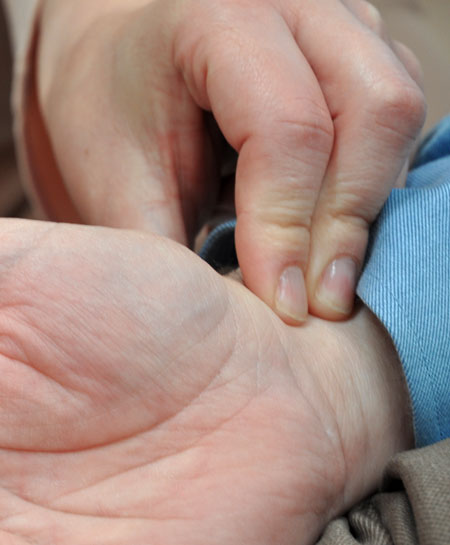Call me - +30 6944.237.080 - +30 210.86.20.001

Peripheral Arterial Disease
Peripheral Arterial Disease (PAD) is a vascular condition that occurs when there is a buildup of plaque in the arteries that supply blood to the limbs, usually the legs. This condition can lead to reduced blood flow to the extremities, causing various symptoms and potentially posing serious health risks. In this article, we'll explore the causes, symptoms, and management of Peripheral Arterial Disease.
Causes:
The primary cause of PAD is atherosclerosis, a condition characterized by the accumulation of fatty deposits, cholesterol, and other substances on the artery walls. Over time, these deposits can narrow and block the arteries, reducing blood flow to the legs and feet.
Symptoms:
Claudication: Pain, cramping, or fatigue in the legs during physical activity, such as walking, which improves with rest.
Intermittent claudication: is the condition in which pain occurs in the lower limb during walking.
The pain subsides when you stop and returns after walking a certain distance. In advanced stages, this pain also occurs at rest—that is, when you are not walking—and is called rest pain. This stage is called critical limb ischemia; the limb is threatened and intervention is necessary to save the leg, because there is a risk of gangrene and even amputation.
Hypesthesia or Weakness: reduced sensation or weakness in the legs. Patients with diabetes and peripheral neuropathy may not present symptoms such as pain due to sensory loss caused by diabetes mellitus and the resultant damage to peripheral nerves.
Coolness or Discoloration: The affected leg may feel cooler than the other and might appear pale or discolored.
Slow Wound Healing: Wounds or sores on the legs and feet may take longer to heal.
Shiny Skin: The skin on the legs may appear shiny, and hair loss may occur.
Erectile dysfunction: when the lesions involve the internal iliac arteries and their branches.
Risk Factors:
Several factors can increase the risk of developing Peripheral Arterial Disease, including:
Smoking: Tobacco use is a significant risk factor for PAD.
Diabetes: Individuals with diabetes are at a higher risk of PAD.
High Blood Pressure: Elevated blood pressure contributes to arterial damage.
High Cholesterol: Elevated levels of cholesterol can lead to atherosclerosis.
Age and Family History: Advancing age and a family history of PAD increase the risk.
Management and Treatment:
Conservative management with lifestyle modifications and pharmacotherapy, as is primarily the case in intermittent claudication.
Lifestyle Changes: Adopting a healthy lifestyle, including regular exercise, smoking cessation, and a balanced diet, can help manage PAD.
Medications: Medications to lower cholesterol, control blood pressure, and prevent blood clots may be prescribed.
Exercise Programs: Supervised exercise programs can improve symptoms and increase walking distance.
Angioplasty and Stenting: Invasive procedures such as angioplasty and stenting may be recommended to open narrowed or blocked arteries.
Bypass Surgery: In severe cases, bypass surgery may be performed to redirect blood flow around blocked arteries.
A discussion with your vascular surgeon will help you understand your condition and the extent of the risk. The personalized solution for your problem is the most appropriate and beneficial.
Prevention:
Preventing PAD involves addressing risk factors through lifestyle modifications, regular medical check-ups, and managing underlying conditions such as diabetes and hypertension.
Early detection and intervention are crucial for effective management and preventing complications.
Peripheral Arterial Disease is a serious condition that requires attention and proactive management. If you experience symptoms or have risk factors for PAD, consult with a healthcare professional for a comprehensive evaluation and personalized treatment plan. A collaborative approach involving lifestyle changes, medications, and, if necessary, medical procedures can significantly improve outcomes and enhance the quality of life for individuals with PAD.
